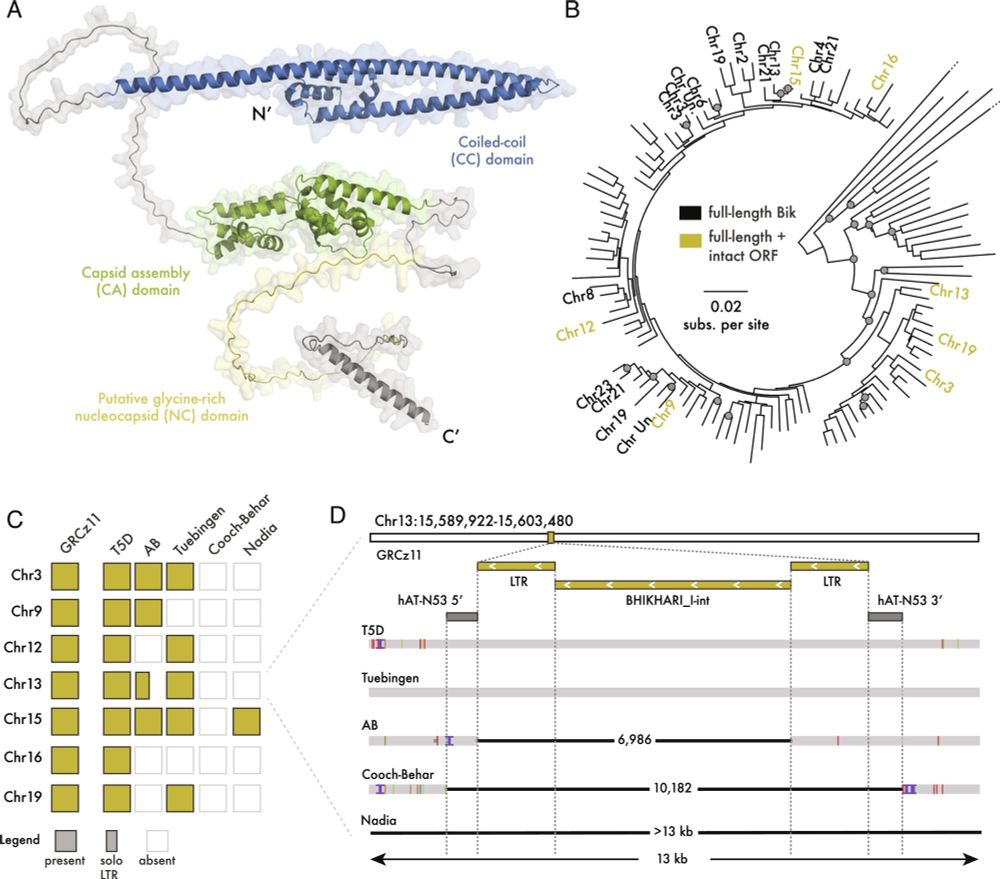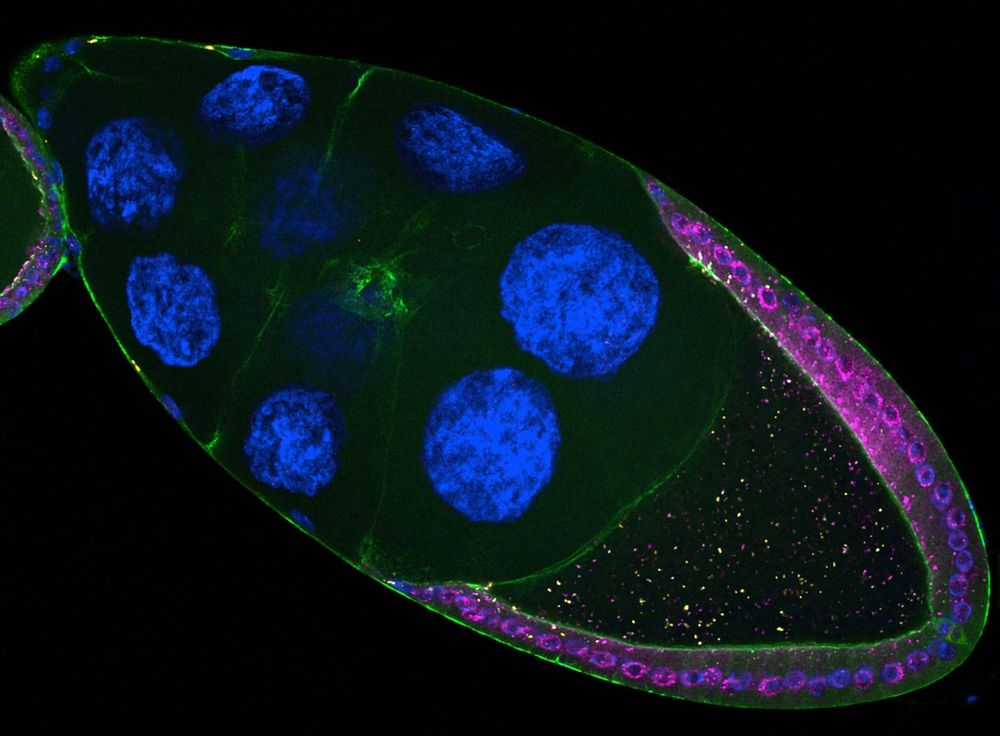
De-coding brown algae 🍙
A short thread on how Ectocarpus and its TE secrets have kept me busy lately:
rdcu.be/eITQH
Sixty-six research teams have been selected for funding, bringing together 239 scientists. Congratulations to all!
➡️ buff.ly/PSn3bi9
#EUfunded #HorizonEurope #ERCSyG
Sixty-six research teams have been selected for funding, bringing together 239 scientists. Congratulations to all!
➡️ buff.ly/PSn3bi9
#EUfunded #HorizonEurope #ERCSyG
The brainchild of @delaconcepcionjc.bsky.social, Nick Irwin and our fantastic collaborators is now out in @natplants.nature.com www.nature.com/articles/s41...
Here’s why I love this work — and why I think you’ll enjoy it too. 👇

The brainchild of @delaconcepcionjc.bsky.social, Nick Irwin and our fantastic collaborators is now out in @natplants.nature.com www.nature.com/articles/s41...
Here’s why I love this work — and why I think you’ll enjoy it too. 👇

We have released #MycoMobilome, a community-focused non-redundant database of transposable element consensus sequences for the fungal kingdom, constructed from >4,000 fungal genomes!
www.biorxiv.org/content/10.1...

We have released #MycoMobilome, a community-focused non-redundant database of transposable element consensus sequences for the fungal kingdom, constructed from >4,000 fungal genomes!
www.biorxiv.org/content/10.1...

academic.oup.com/plcell/artic...

academic.oup.com/plcell/artic...
How does genetic architecture constrain evolutionary trajectories? To address this question, we inferred the genetic architecture of convergent plumage coloration and its evolutionary history in wheatears.

How does genetic architecture constrain evolutionary trajectories? To address this question, we inferred the genetic architecture of convergent plumage coloration and its evolutionary history in wheatears.


genomebiology.biomedcentral.com/articles/10....
A wonderful collaboration with @ericadinatale.bsky.social, @cssmartinho.bsky.social, @rorycraig.bsky.social, and Susana Coelho! 🎉

genomebiology.biomedcentral.com/articles/10....
A wonderful collaboration with @ericadinatale.bsky.social, @cssmartinho.bsky.social, @rorycraig.bsky.social, and Susana Coelho! 🎉
A short thread on how Ectocarpus and its TE secrets have kept me busy lately:
rdcu.be/eITQH
A short thread on how Ectocarpus and its TE secrets have kept me busy lately:
rdcu.be/eITQH
Congrats to @agalip.bsky.social & Josue Barrera for their work in @natecoevo.nature.com

Congrats to @agalip.bsky.social & Josue Barrera for their work in @natecoevo.nature.com
www.nature.com/articles/s41...

www.nature.com/articles/s41...
www.anotherbookondatascience.com/chapter1.html

www.anotherbookondatascience.com/chapter1.html
doi.org/10.1186/s130...

doi.org/10.1186/s130...
Gag proteins of endogenous retroviruses are required for zebrafish development
www.pnas.org/doi/10.1073/...
Led heroically by Sylvia Chang & @jonowells.bsky.social
A study which has changed the way I think of #transposons! No less! 🧵 1/n

Gag proteins of endogenous retroviruses are required for zebrafish development
www.pnas.org/doi/10.1073/...
Led heroically by Sylvia Chang & @jonowells.bsky.social
A study which has changed the way I think of #transposons! No less! 🧵 1/n
Yes, they’re full of surprises ✨
Come meet Ectocarpus at #ESEB2025!
📍Room 113 - S28.03
🗓️ Thursday, 2:30pm

Yes, they’re full of surprises ✨
Come meet Ectocarpus at #ESEB2025!
📍Room 113 - S28.03
🗓️ Thursday, 2:30pm
The amazing work of @petrollromy.bsky.social and @borglab.bsky.social is also here ⤵️
www.cell.com/current-biol...
The amazing work of @petrollromy.bsky.social and @borglab.bsky.social is also here ⤵️
www.cell.com/current-biol...


But did you know they can also jump 𝘣𝘦𝘵𝘸𝘦𝘦𝘯 cells? 🤯
Our new study reveals how retrotransposons invade the germline directly from somatic cells.
www.biorxiv.org/content/10.1...
A short thread 🧵👇

But did you know they can also jump 𝘣𝘦𝘵𝘸𝘦𝘦𝘯 cells? 🤯
Our new study reveals how retrotransposons invade the germline directly from somatic cells.
www.biorxiv.org/content/10.1...
A short thread 🧵👇
[PhD Position in Computational Evolutionary Transcriptomics]
If you are interested in doing a PhD in gorgeous Scotland on 'Why embryo development goes wrong sometimes?', please consider applying and join our wonderful team in Dundee!
www.dundee.ac.uk/phds/opportu...

[PhD Position in Computational Evolutionary Transcriptomics]
If you are interested in doing a PhD in gorgeous Scotland on 'Why embryo development goes wrong sometimes?', please consider applying and join our wonderful team in Dundee!
www.dundee.ac.uk/phds/opportu...



